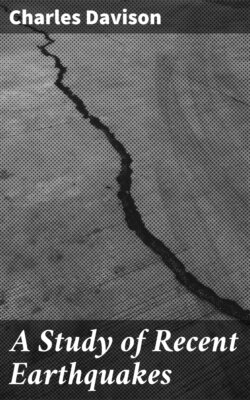Читать книгу A Study of Recent Earthquakes - Charles Davison - Страница 38
На сайте Литреса книга снята с продажи.
ISOSEISMAL LINES AND DISTURBED AREA.
ОглавлениеThe curves in Fig. 16 represent the isoseismal lines as drawn by Dr. Johnston-Lavis. As in the earthquake of 1881, they bound respectively the areas of complete destruction, partial destruction and slight damage to buildings, the course of the outer line being to a great extent conjectural owing to the small extent of land traversed by it. The first isoseismal is about 2½ miles long, 1½ miles broad, and 3 square miles in area; the second about 4 miles long, 3½ miles broad, and 11 square miles in area; and the third about 6½ miles long, 6 miles broad, and 30 square miles in area. The curve drawn by Professor Mercalli (Fig. 14) coincides nearly with the second of these lines.
At Fontana, the damage exceeded that in the surrounding country, though the difference was of course less marked than on the previous occasion.
Fig. 16.—Isoseismal lines of the Ischian earthquake of 1883.ToList
Outside Ischia, the shock was felt distinctly in all the island of Procida and in Vivara; on the mainland, by some as far as Pozzuoli and by several persons in Naples, which is twenty miles from Casamicciola. The seismograph at the university of this city registered two small shocks, the first at 9.10 P.M., and the second and stronger at 9.25 P.M.; and De Rossi states that at about 9.30 P.M. the seismographs at Ceccano, Velletri, and Rome recorded a shock consisting of very slow undulations. There are again no materials for estimating the size of the disturbed area, but there can be no doubt that it was much less than that of a moderately strong British earthquake.
